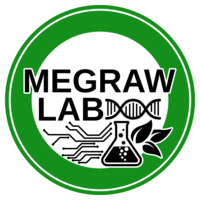| Title | Small Genetic Circuits and MicroRNAs: Big Players in Polymerase II Transcriptional Control in Plants. |
| Publication Type | Journal Article |
| Year of Publication | 2016 |
| Authors | Megraw, M, Cumbie, JS, Ivanchenko, MG, Filichkin, SA |
| Journal | Plant Cell |
| Volume | 28 |
| Issue | 2 |
| Pagination | 286-303 |
| Date Published | 2016 Feb |
| ISSN | 1532-298X |
| Abstract | RNA Polymerase II (Pol II) regulatory cascades involving transcription factors (TFs) and their targets orchestrate the genetic circuitry of every eukaryotic organism. In order to understand how these cascades function, they can be dissected into small genetic networks, each containing just a few Pol II transcribed genes, that generate specific signal-processing outcomes. Small RNA regulatory circuits involve direct regulation of a small RNA by a TF and/or direct regulation of a TF by a small RNA and have been shown to play unique roles in many organisms. Here, we will focus on small RNA regulatory circuits containing Pol II transcribed microRNAs (miRNAs). While the role of miRNA-containing regulatory circuits as modular building blocks for the function of complex networks has long been on the forefront of studies in the animal kingdom, plant studies are poised to take a lead role in this area because of their advantages in probing transcriptional and posttranscriptional control of Pol II genes. The relative simplicity of tissue- and cell-type organization, miRNA targeting, and genomic structure make the Arabidopsis thaliana plant model uniquely amenable for small RNA regulatory circuit studies in a multicellular organism. In this Review, we cover analysis, tools, and validation methods for probing the component interactions in miRNA-containing regulatory circuits. We then review the important roles that plant miRNAs are playing in these circuits and summarize methods for the identification of small genetic circuits that strongly influence plant function. We conclude by noting areas of opportunity where new plant studies are imminently needed. |
| DOI | 10.1105/tpc.15.00852 |
| Alternate Journal | Plant Cell |
| PubMed ID | 26869700 |
| PubMed Central ID | PMC4790873 |
Small Genetic Circuits and MicroRNAs: Big Players in Polymerase II Transcriptional Control in Plants.
Submitted by Megraw Lab Admin on Tue, 2016-07-12 22:04

